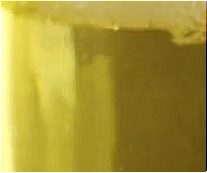| "Descrizione" by A_Partyns (12948 pt) | 2023-Jul-17 13:27 |
Review Consensus: 8 Rating: 8 Number of users: 1
| Evaluation | N. Experts | Evaluation | N. Experts |
|---|---|---|---|
| 1 | 6 | ||
| 2 | 7 | ||
| 3 | 8 | ||
| 4 | 9 | ||
| 5 | 10 |
Tetrasodium glutamate diacetate is a naturally derived chemical compound and is used in the following products: washing & cleaning products, polishes and waxes, air care products and biocides (e.g. disinfectants, pest control products). It is known for its ability to bind metal ions, which can negatively affect the stability and appearance of products.
The name defines the structure of the molecule:
- "Tetra" indicates the presence of four sodium atoms in the molecule.
- "Sodium" refers to the sodium ions in the molecule.
- "Glutamate" indicates that the molecule is a sodium salt of glutamic acid.
- "Diacetate" indicates that there are two acetate groups in the molecule.
The synthesis process takes place in different steps and with a reaction involving glutamic acid, acetic anhydride and sodium hydroxide. Tetrasodium Glutamate Diacetate is produced by reacting glutamic acid with acetic acid to form glutamate diacetate. This product is then reacted with sodium hydroxide to form the sodium salt.
It appears as a colourless to yellowish liquid.

What it is used for and where
Industry
Industrial abrasion processing with low release rate (e.g. cutting of textile, cutting, machining or grinding of metal) and industrial abrasion processing with high release rate (e.g. sanding operations or paint stripping by shot-blasting).
Cosmetics
It is a stabilising agent of plant origin in chemical formulations, i.e. what is commonly called a 'chelating' agent.
Chelating agent. It has the function of preventing unstable reactions and improving the bioavailability of chemical components within a product, and removes calcium and magnesium cations that can cause cloudiness in clear liquids.
Outdoor use in long-life materials with low release rate (e.g. metal, wooden and plastic construction and building materials) and indoor use in long-life materials with low release rate (e.g. flooring, furniture, toys, construction materials, curtains, foot-wear, leather products, paper and cardboard products, electronic equipment).
This substance can be found in products with material based on: stone, plaster, cement, glass or ceramic (e.g. dishes, pots/pans, food storage containers, construction and isolation material).
- Molecular Formula: C9H9NNa4O8
- Molecular Weight: 351.13 g/mol
- CAS: 51981-21-6
- EC Number: 257-573-7
- UNII: 5EHL50I4MY
Synonyms:
- GLDA
References_____________________________________________________________________
Li, M., Yuan, Q., Gao, X., & Hu, Y. (2020). Understanding the differential depression of tetrasodium glutamate diacetate on the separation of specularite and chlorite: Experimental and DFT study. Minerals Engineering, 159, 106629.
Abstract. In this paper, tetrasodium glutamate diacetate (TGD) was applied as a depressant for cationic direct flotation separation of specularite and chlorite. The depression performance of TGD was compared with starch via microflotation experiments. The adsorption mechanism of TGD onto chlorite surface were investigated by surface charge measurements, fourier transform infrared spectroscopy (FT-IR), X-ray photoelectron spectroscopy (XPS) and density functional theory (DFT) calculation. The microflotation results indicated that, compared with starch, TGD exhibited better depression performance with chlorite recovery of 16.73% and specularite recovery of 92.41% at pH 10. The mechanistic study demonstrated that TGD mainly chemisorbed on chlorite surface by Osingle bondMg and single bond bonds, from which Osingle bondMg bonds were created preferentially. TGD could be an efficient depressant of chlorite in the specularite/chlorite separation.
| Evaluate |

